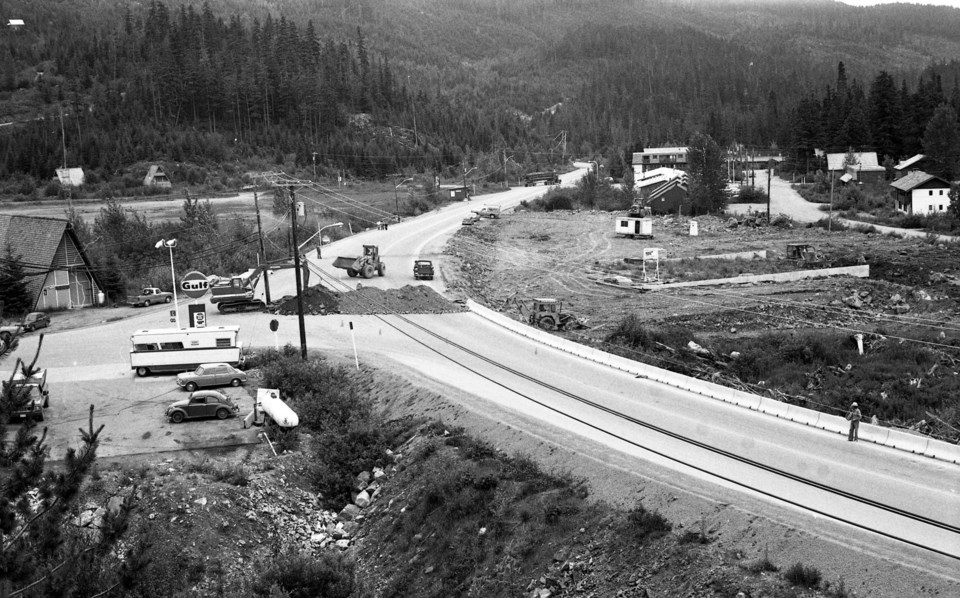For most people, the main reason to visit Whistler’s gas stations is for, well, the gas. There was a time, however, when the resort’s gas stations offered many much-needed services beyond that to the growing community.
Before its eventual closure, the Husky was Whistler’s longest-standing conventional gas station—but it was not the first. The B/A gas station opened not long after Garibaldi Lifts Ltd. declared Whistler Mountain open for business. In 1969, The B/A, or British American Oil Company, was amalgamated into the Canadian Gulf Oil Company and the gas station became a Gulf, easily recognised by its orange and blue circular logo. Located in today’s Creekside, where Coastal Culture and Tim Hortons are now found, the first gas station in Whistler was the place to go if you needed to buy groceries—and it could get quite busy after skiing. Identifying another need—and business opportunity—the station also installed a washing machine and dryer that was used as a public laundry.
Not long after, competition for these services arrived in the form of a Union 76 gas station, which opened in 1970. Then, in July 1977, the Union 76 rebranded to Husky, and that station remained a Husky until just last month, when it transitioned into a Co-Op. Throughout its existence, the Husky went through many iterations, expanding multiple times.
Garibaldi’s Whistler News in 1977 advertised only two places in Whistler to buy groceries. According to the paper, they were, “Food Plus, located on Highway 99 in the Husky Service Centre. Carries fresh and frozen produce, meat, pharmaceutical products, sundries.” Along with the “MiniMart at Whistler-Rainbow Gulf Station stocked with a variety of foods.”
With groceries only available at local gas stations, those visiting Whistler were encouraged to bring their own food if they wanted to cook wherever they were staying, and most people we’ve spoken to remember buying candy at the gas stations, but driving to Squamish for groceries. Bob Penner, a long-time Whistler local recalled, “You did have to go to Squamish for food because at the gas station there were two types of beans and a pound of sugar at the shop. We would pool our things and shop. Everything was out of cans, canned meat—spam was huge. Kraft Dinner was great.”
When The Grocery Store opened in the village at the beginning of 1981, the competition ramped up. By January 1982, Jan Systad who previously ran the popular Cookhouse at Mons, took over the operation of the deli, store, and laundry facilities at the Husky, where she continued to serve her “much-sought-after home-cooked goodies,” In 1983, the store at the Gulf was bought and renamed the Rainbow Grocer. Photos from The Whistler Question at the time show deli items for sale, including bacon for $2.19 a pound and Coho salmon steaks for $4 a pound.
In 1985, Petro-Canada acquired all the Gulf gas stations across the country and the Gulf station soon transitioned to a Petro-Can. In 2000, it was learned that the Petro-Can underground storage tanks had been leaking, likely for several years, disrupting Intrawest’s plans for the redevelopment of Creekside. Remediation started to remove the petrochemicals and hydrocarbons from the ground and remediation efforts continued until 2006, when the Petro-Can opened for business as usual. That same year, Whistler’s first conventional gas station was demolished to finish the remediation works. While the flier to patrons said it was a temporary closure for redevelopment, the empty lot and large hole remained for many years and a gas station never did reopen on the site.




